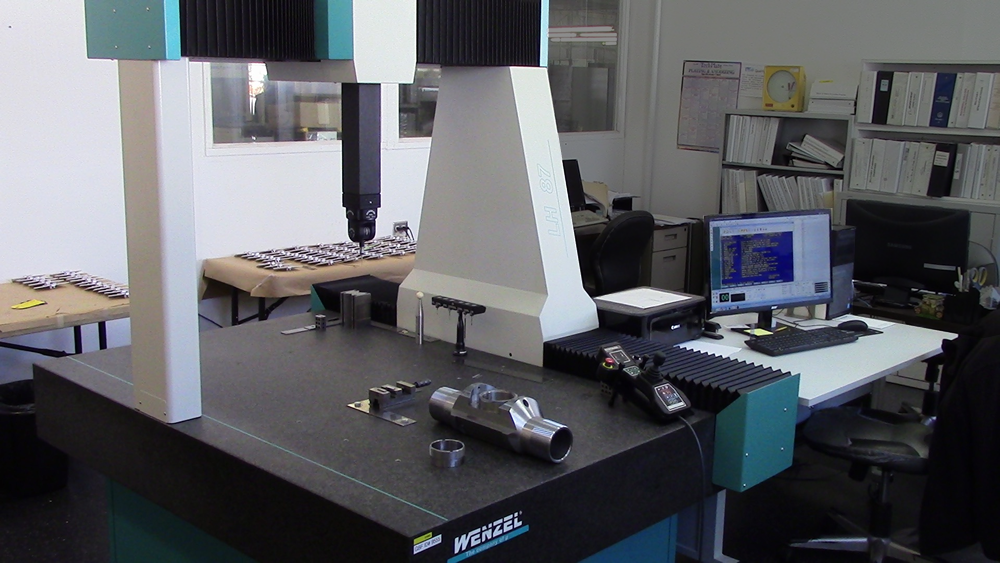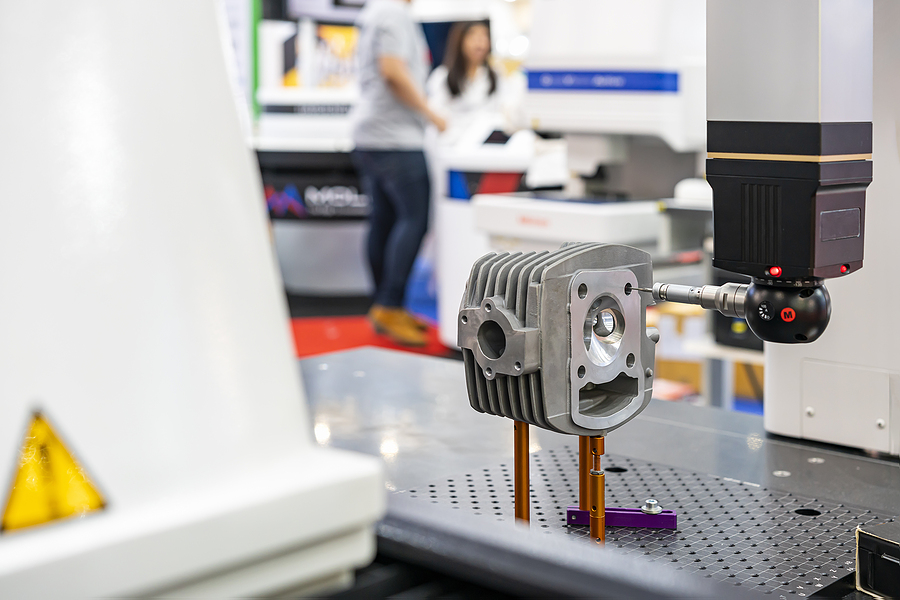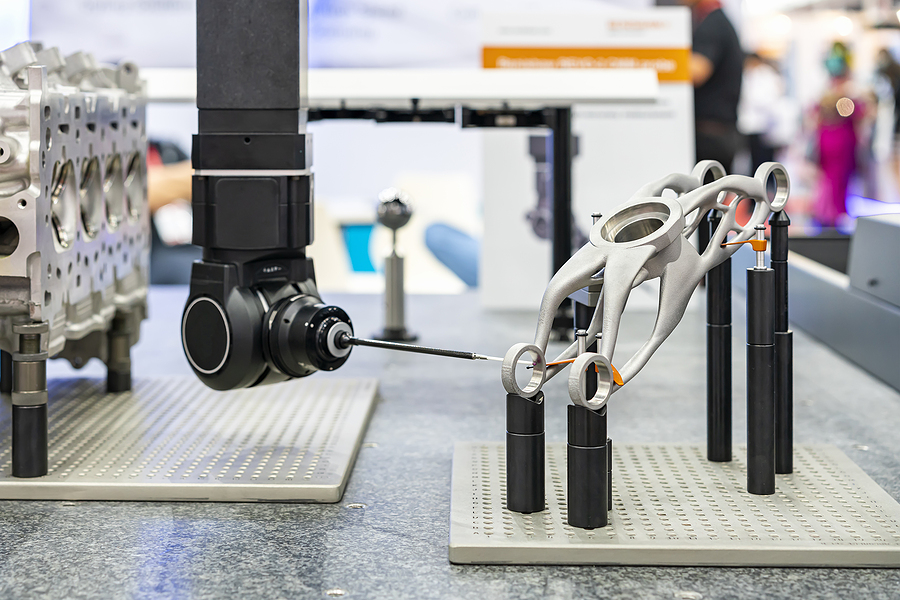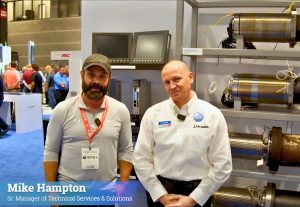It’s a common misconception in manufacturing that production numbers and output are of the utmost importance. However, that’s all wrong. First and foremost, safety is the number one factor in manufacturing. Right behind safety comes quality (PMG’s Project Manager Stephen D. talks about these priorities) and critical to quality are CMMs.
What are CMMs
CMM stands for Coordinate Measuring Machine. In short, CMMs are machines that measure physical dimensions and geometric characteristics of manufactured components. These same dimensions, features, and characteristics can be measured manually with precision hand tools and instruments. Unfortunately, manual inspections leave room for error (human error), so CMMs were created. 
At the most basic level, a CMM consists of a table on which the part is set for inspection processes and a probe that performs the inspection with a computer program that guides and controls the inspection probes.
CMM Programming
When explained, CMMs seem very simple. However, there is much more to it including the way in which the CMM is programmed. Some parts have very few characteristics needing inspection while others have hundreds. Regardless of the number of characteristics to be inspected, a CMM cannot perform the inspection tasks unless it’s been programmed to do so. Similar to PLC programming or CNC programming, CMM programming is a sequential set of instructions directing the machine in all of its operations. A CMM program is written through software designed specific for CMMs and will seem like a foreign language unless you are a CMM Programmer.
CMM Programmers
CMM Programmers write the long list of code and sequential instruction needed for a CMM machine to operate. CMM Programmers ensure that each and every feature, characteristic, and dimension of the part is measured by the probe on the CMM and in the way that keeps the inspection process as efficient as possible. Not only does a CMM programmer determine the path of instruction, but a CMM programmer will also ensure that the program clearly outlines the dimensions and tolerances required of the part. These two details (dimensions/tolerances and inspection path) must align once the machine is running. If these two factors are not aligned, the part does not pass inspection. Does this still sound easy? It’s not. This process has gotten increasingly more difficult over the years, due to the much more complex and geometric forms of machined components. 
Interested in Being a CMM Programmer?
A great place to start is school where you can earn degrees or certificates in Quality and Manufacturing Technologies. You will need to gain work experience (as a Quality Inspector or CMM Operator) once you receive the degree or certificate of course but it’s still a great place to start. If you’ve already got work experience in manufacturing (in the field of quality or elsewhere), make it clear that you’re interested in operating CMMs and/or programming CMMs. Often times, CMM Programmers become CMM Programmers through on-the-job training.
Are You a CMM Programmer or CMM Operator?
Join the PMG team for the opportunity to travel and explore new places, learn new techniques, create flexibility in your schedule, and work with some of the greatest manufacturers in the US. Apply Here!








